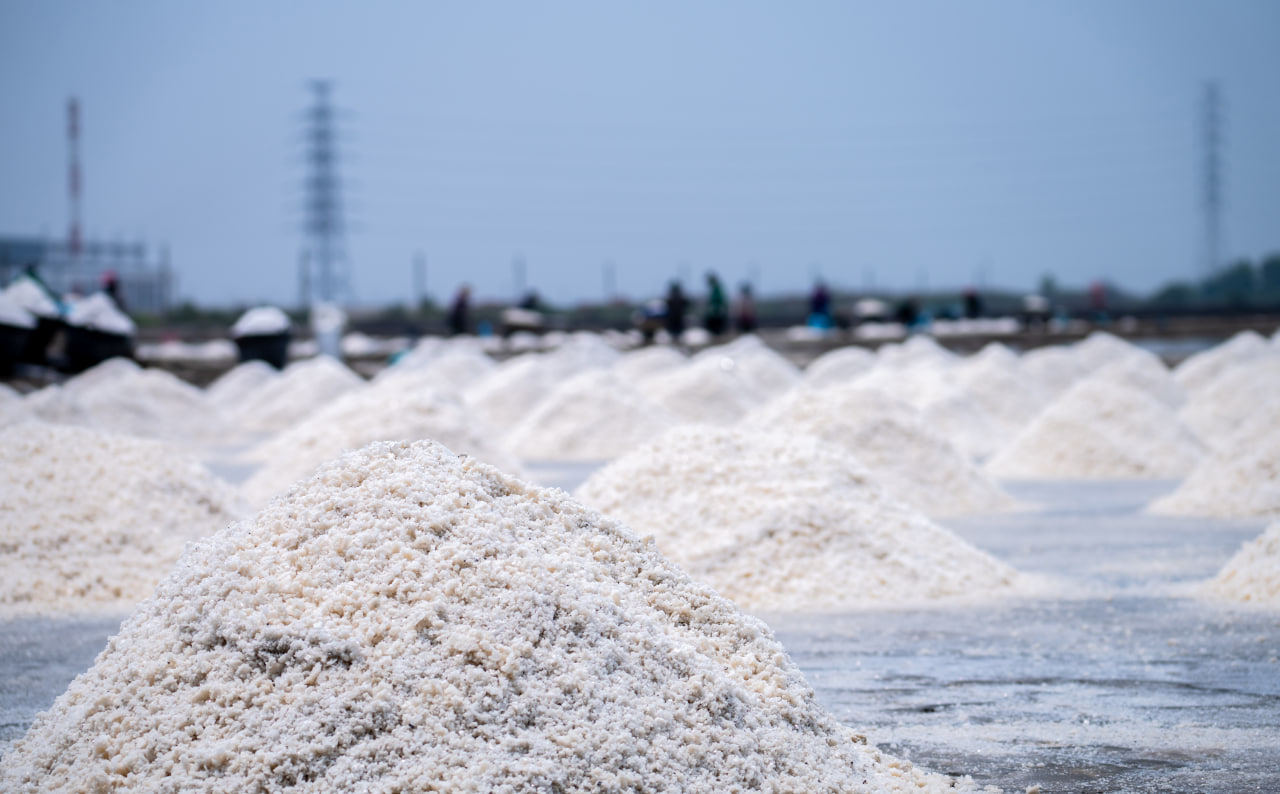Introduction
In the realm of gourmet salts, Iranian Blue Salt has emerged as one of the rarest and most visually captivating mineral salts available. With its mesmerizing sapphire hue and unparalleled mineral composition, this unique salt has become a prized ingredient in upscale kitchens and luxury food markets across the globe. But what is Iranian Blue Salt? Why is it so rare? And how has this vibrant mineral from Iran’s deserts captured the attention of culinary experts, health-conscious consumers, and exotic product importers worldwide? Let’s uncover the secrets behind this gemstone of the salt world.
1. What Is Iranian Blue Salt?
Iranian Blue Salt, also known as Persian Blue Salt, is a naturally occurring rock salt extracted from ancient salt mines in Semnan province, particularly near the city of Garmsar. Unlike other colored salts that are artificially enhanced, the striking blue veins in this salt are entirely natural, caused by the natural compression of potassium chloride crystals over millions of years.
This geological process makes Iranian Blue Salt one of the rarest types of edible salt on Earth, harvested in extremely limited quantities. Its color, taste, and mineral composition make it a luxurious and exotic item, often compared to rare gems like sapphire.
2. The Unique Characteristics of Iranian Blue Salt
Color: Shades of blue and turquoise resulting from potassium-rich crystals.
Taste: Bold, initially sharp on the tongue with a subtly sweet aftertaste.
Texture: Crunchy and crisp, ideal as a finishing salt.
Purity: Mined naturally without chemical treatments or additives.
Mineral Richness: High in potassium, calcium, and magnesium.
These traits make Iranian Blue Salt perfect not only for culinary use but also as a wellness and presentation element.
3. Why the Global Market Is Obsessed with Iranian Blue Salt
There are several reasons why Iranian Blue Salt has become highly sought-after internationally:
Rarity: Less than 1% of the world’s salt production resembles this blue hue.
Aesthetic Value: Chefs and restaurants use it to elevate food presentation.
Health Benefits: Naturally occurring minerals support body function.
Luxury Branding: Positioned as a premium product, often gifted in high-end packaging.
From Paris to Tokyo, gourmet shops and five-star restaurants feature this rare salt on their shelves and menus.
4. Key Export Markets and Trends
The major export destinations for Iranian Blue Salt include:
France
Germany
United Kingdom
United States
Japan
United Arab Emirates
These markets are driven by trends in wellness, exotic foods, and gourmet ingredients. Consumers in these countries are increasingly seeking rare, natural, and ethically sourced products.
5. Packaging, Grading, and Certification
To appeal to premium markets, Iranian exporters focus heavily on:
Elegant Packaging: Glass jars, cork-sealed containers, and eco-friendly materials.
Salt Grades:
Crystals for display and grinders
Flakes for finishing dishes
Powdered form for wellness mixes and cosmetic use
Certifications:
ISO 22000 and HACCP for food safety
Organic and Halal certificates for global appeal
These elements ensure Iranian Blue Salt not only looks luxurious but meets strict international quality standards.
6. Strategic Marketing and Storytelling
The success of this rare salt is not just about its look or taste—it’s about the story. Exporters and marketers emphasize:
Ancient Iranian salt mine heritage
Eco-conscious mining methods
Hand-harvested craftsmanship
Geographical exclusivity (only found in Iran)
Online shops, gourmet catalogs, and social media campaigns present Iranian Blue Salt as not just a product—but an experience.
7. Challenges in Exporting Iranian Blue Salt
Despite its appeal, exporting this rare commodity comes with its own set of challenges:
Limited Supply: Natural constraints restrict volume.
High Cost: Harvesting and packaging drive up prices.
Counterfeits: Imitation products from other countries dilute the brand.
Sanctions: Complications in banking and logistics due to political restrictions.
However, these challenges have also created an aura of exclusivity, making Iranian Blue Salt even more coveted.
8. How Iranian Exporters Are Meeting Global Demand
To ensure consistency and expand market share, successful Iranian producers are:
Partnering with luxury gourmet brands abroad
Offering private-label manufacturing for international distributors
Participating in global food expos (e.g., SIAL, Anuga, Gulfood)
Leveraging e-commerce platforms like Amazon, Etsy, and Shopify
Additionally, digital marketing campaigns highlight product origin, authenticity, and health benefits.
9. Future Potential: Beyond Culinary Use
Iranian Blue Salt has promising applications beyond the kitchen:
Spa and Wellness: Used in bath salts and scrubs
Interior Design: Decorative salt lamps and features
Health Supplements: Mineral additives in premium wellness powders
With global interest in natural health products on the rise, the demand for Iranian Blue Salt is likely to expand into new verticals.
Conclusion
The journey of Iranian Blue Salt from the dry salt caves of Iran to the high-end kitchens of Europe, Asia, and the Americas is a testament to the power of nature, tradition, and thoughtful marketing. This rare gem of the culinary world is not just salt—it is a statement of luxury, purity, and Persian heritage. As more people discover its story, Iranian Blue Salt is destined to remain one of the most exclusive and celebrated mineral salts in the world.
Meta Description: Discover why Iranian Blue Salt is considered the rare sapphire of the gourmet salt world. Learn about its origins, rarity, global demand, and export success in this 1500+ word SEO-focused article.
Tags: Iranian Blue Salt, rare salts, gourmet salt, Persian salt export, blue rock salt, exotic salts, culinary luxury, Iranian salt industry




